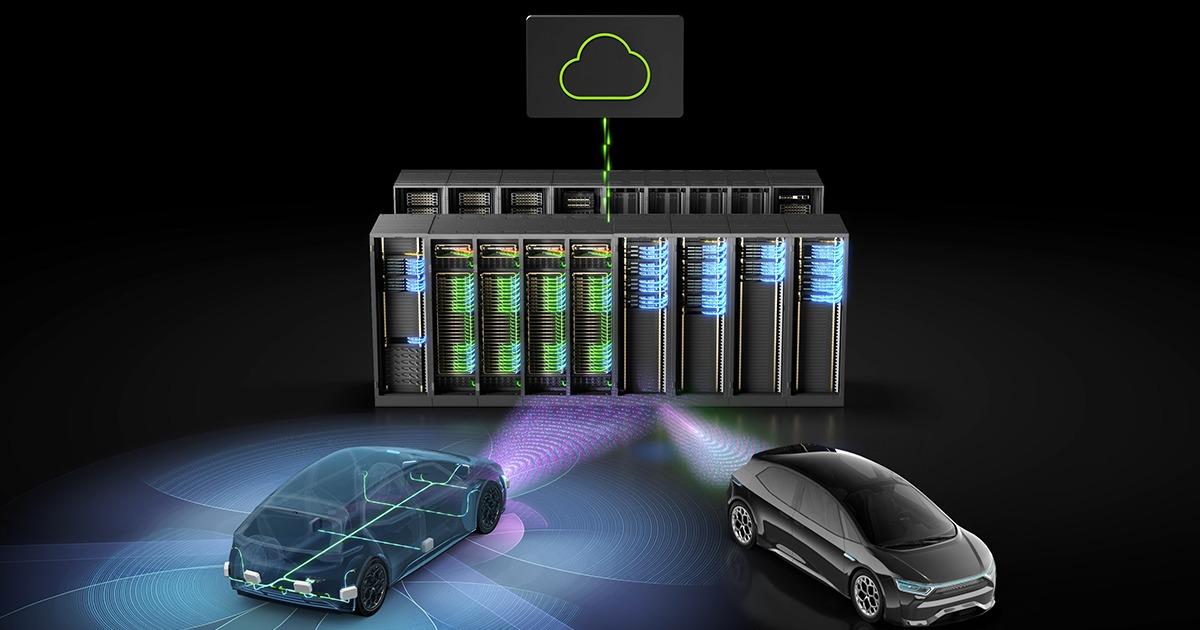- Drive Hyperion 10 integrates two Thor chips and a redundant sensor array to enable level 4 autonomous cars.
- Stellantis, Nvidia, Uber and Foxconn alliance for robotaxis: production target in 2028 and first deployment of 5.000 units after starting in the US.
- Nvidia offers an open platform (hardware, software and simulation) and a revenue model per vehicle, with clients such as Mercedes-Benz, Volvo or Lucid.
- Reports point to a project based on DRIVE AGX Thor and an initial investment of close to $3.000 billion.

La Nvidia's automotive strategy takes another step forward with a roadmap that combines computing platforms for the autonomous car and alliances for robotaxis. The company aims to be the leading technology partner for manufacturers and operatorswith an approach that also looks to Europe and markets like Spain, where the rollout will depend on certifications and regulation.
Far from manufacturing their own vehicles, Nvidia reinforces a proposal that brings together hardware, software and simulation under a common architecture so that third parties can develop advanced driving functions and autonomous mobility servicesIt is a neutral supplier position that contrasts with proprietary models in the sector, with the idea of accelerating adoption at scale.
Hyperion 10 Drive: Architecture and Key Agreements

The latest iteration of the platform, Hyperion 10 DriveIt is designed to enable level 4 autonomy. It incorporates two Thor chips (up to 2.000 teraflops each) and a sensor package with fourteen cameras, nine radars, a LiDAR and twelve ultrasonic sensors, all with redundancy so that, if one component fails, the vehicle will stop safely.
This ecosystem seeks to standardize the sector's computing base and It is already being tested with manufacturers such as Mercedes-Benz and Stellantiswhich validate the architecture for robotaxi functions. The approach is modular and open, so that each brand can integrate its own peripheral hardware and software strategies onto a common platform.
On the alliance front, Stellantis, Nvidia, Uber and Foxconn They have announced a collaboration to explore the joint development of autonomous vehicles for transportation services. The stated objective is start production in 2028 and that Uber will deploy 5.000 Stellantis units in selected cities after the launch in the United States, integrating Nvidia's AI software and computing, Uber's operations, and Foxconn's electronics.
Along with these advances, Lucid It is among the first manufacturers planning to offer Level 4 to individual customers, while Nvidia's automotive ecosystem already includes names like Mercedes-Benz, Volvo, Jaguar Land Rover, BYD, Rivian or XiaomiThe message is clear: it is more efficient to adopt a mature technological base than to build it from scratch.
- Tesla aims for a more closed model, something like to be the “Apple” of cars.
- Nvidia aims to be the “Windows” of autonomy: an open platform for anyone.
The scale of the challenge remains remarkable: Waymo operates approximately 2.000 robotaxis After years of development and several vehicle generations, this illustrates the gap between ambition and actual deployment. The key lies in homologations, certifications, and sustained industrial testing over time.
Technology, business model and roadmap
Nvidia's role focuses on providing the AI factory for automobilesChips, simulation tools, and synthetic data for training and validation driving functionsThe revenue model is predictable and scalable, because the company charges for each vehicle that uses its platform, even though today the automotive industry represents barely around 1,3% of their sales, with faster growth than other lines.
According to recent reports, Nvidia is preparing a robotaxi project based on DRIVE AGX Thor with a single-stage architecture and a continuous neural network, dispensing with traditional modules. The ambition would be to establish a “technical model” a benchmark for the sector, with an initial investment that could be around 3.000 millionHowever, this information has not been officially confirmed.
Looking ahead to Europe and Spain, the implementation of robotaxis will require clear regulatory frameworks, homologation and insurancein addition to coordination with local authorities to operate on public roads. The presence of European manufacturers within the Nvidia ecosystem and the maturity of the communication networks They facilitate the groundwork, but the schedules will be subject to field tests and certification processes.
Combining Hyperion 10 Drive and industry agreements This reinforces Nvidia's thesis: not selling cars, but the infrastructure that makes them possible. If technical validation and regulatory support are forthcoming, commercial pilot programs could expand with greater traction in the coming years, with Europe well-positioned thanks to its industrial base and the demand for more efficient mobility solutions.
I am a technology enthusiast who has turned his "geek" interests into a profession. I have spent more than 10 years of my life using cutting-edge technology and tinkering with all kinds of programs out of pure curiosity. Now I have specialized in computer technology and video games. This is because for more than 5 years I have been writing for various websites on technology and video games, creating articles that seek to give you the information you need in a language that is understandable to everyone.
If you have any questions, my knowledge ranges from everything related to the Windows operating system as well as Android for mobile phones. And my commitment is to you, I am always willing to spend a few minutes and help you resolve any questions you may have in this internet world.
